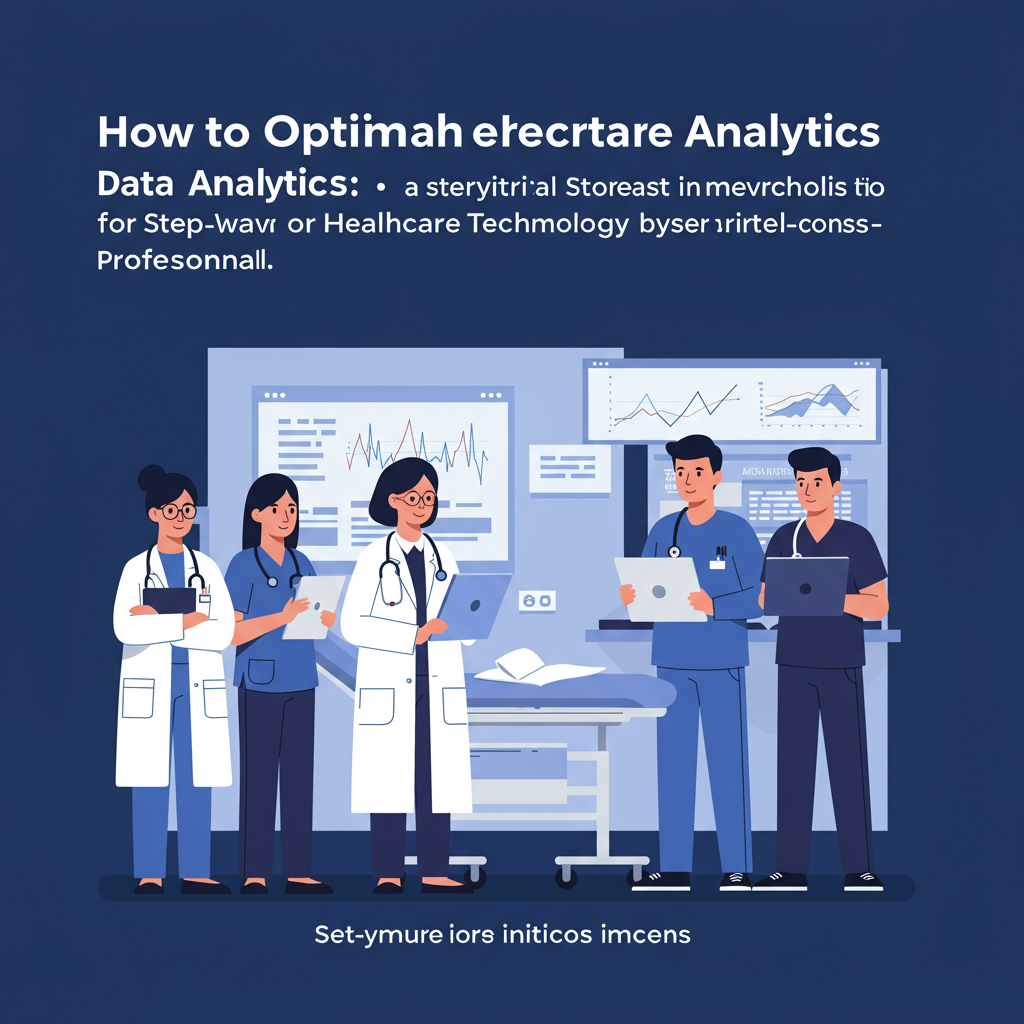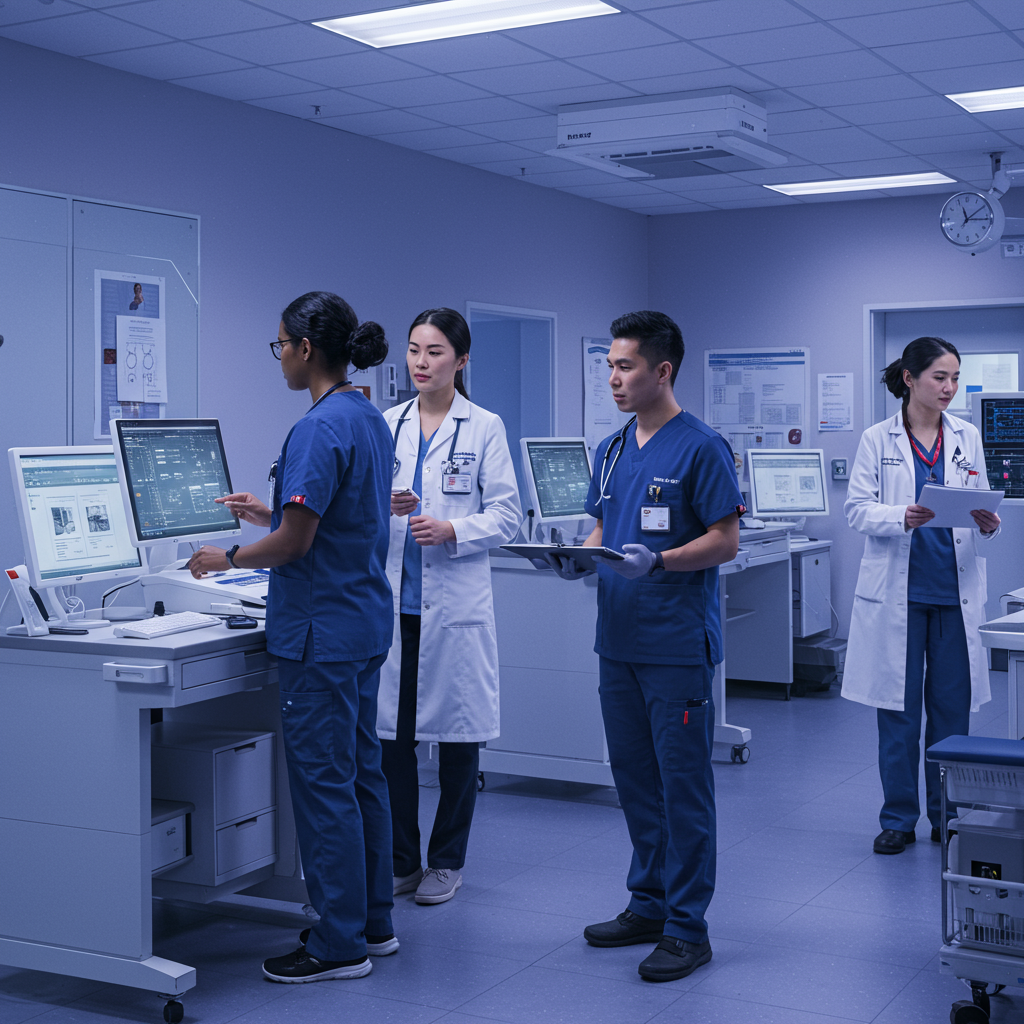
Article Summary
Remote monitoring technology is revolutionizing healthcare by enabling continuous patient oversight, improving care delivery, and boosting operational efficiency. For healthcare professionals and administrators, adopting these solutions leads to better patient outcomes, reduced hospital readmissions, and streamlined workflows—delivering measurable improvements in both quality of care and cost savings.
The healthcare industry stands at the cusp of a digital revolution, with remote monitoring technology (RMT) leading the charge. From continuous glucose monitors to wearable ECG devices, these innovations are redefining care delivery, operational efficiency, and patient engagement. This comprehensive analysis explores the current state, drivers, challenges, opportunities, and future of remote monitoring, delivering actionable insights for healthcare executives, investors, and policy makers.
---
## 1. Market Landscape: Adoption Rates and Market Size
Remote monitoring technology has rapidly transitioned from niche to mainstream, propelled by advances in sensor technology, telecommunication infrastructure, and digital health platforms. According to a 2023 report by **MarketsandMarkets**, the global remote patient monitoring (RPM) market is projected to grow from **$56.5 billion in 2022 to $175.2 billion by 2027**, at a CAGR of 25.4%. Adoption rates surged post-pandemic:
- **Over 88% of hospitals and health systems in the US** implemented some form of remote patient monitoring by 2023 (American Hospital Association).
- **80% of US physicians** reported integrating RPM into chronic care management, notably for cardiovascular, diabetes, and respiratory conditions (AMA Digital Health Research).
- In Europe, adoption is rising, particularly in the Nordics, Germany, and the UK, with national health services funding large-scale pilots and deployments.
- Asia-Pacific sees accelerating uptake in Japan, Australia, and South Korea, driven by aging populations and government initiatives.
### Key Segments
- **Wearable Devices:** Smartwatches, biosensors, patches (e.g., Apple Watch, Abbott FreeStyle Libre).
- **Home-Based Medical Devices:** Connected blood pressure cuffs, pulse oximeters.
- **Integrated Platforms:** End-to-end software solutions for clinicians and patients (e.g., Philips, BioTelemetry).
- **Data Aggregators and Analytics:** Solutions leveraging AI for predictive insights (e.g., Validic, Current Health).
---
## 2. Key Drivers
### Technology Advances
- **Miniaturization & Accuracy:** Next-gen biosensors and IoT devices deliver hospital-grade accuracy, continuous monitoring, and improved patient comfort.
- **AI & Data Analytics:** Machine learning enables real-time anomaly detection, risk stratification, and personalized care.
- **Interoperability:** FHIR and HL7 standards facilitate seamless integration into EHRs and clinical workflows.
- **5G & Connectivity:** High-speed, low-latency networks support real-time data transmission and remote diagnostics.
### Regulatory Changes
- **CMS Reimbursement Expansion:** The US Centers for Medicare & Medicaid Services (CMS) expanded reimbursement for RPM codes, fueling provider adoption.
- **Emergency Use Authorizations:** COVID-19 led to relaxed regulations around device approvals and telehealth, accelerating market entry.
- **EU MDR Compliance:** European regulations prioritize patient safety and data security, driving investment in compliant devices.
### Patient Demands
- **Chronic Disease Prevalence:** Aging populations and rising chronic disease rates demand scalable, home-based care.
- **Consumerization:** Patients expect convenience, transparency, and digital engagement similar to other industries.
> “Remote monitoring is not just a tech upgrade—it’s a paradigm shift in chronic disease management and preventative care.”
> — Dr. John Halamka, President, Mayo Clinic Platform
---
## 3. Stakeholder Impact Analysis
### Healthcare Providers
**Opportunities:**
- Improved chronic disease management and early intervention.
- Reduced hospital readmissions and ED visits.
- Enhanced care coordination and workflow efficiency.
**Challenges:**
- Integration with legacy EHRs.
- Training clinical staff on device use and data interpretation.
**Example:**
*Mayo Clinic’s remote cardiac monitoring program demonstrated a 40% reduction in 30-day hospital readmissions for heart failure patients.*
### Patients and Patient Experience
- Empowered self-management and increased adherence.
- Improved health outcomes through early detection.
- Enhanced satisfaction through convenience and reduced travel.
**Clinical Evidence:**
*A 2022 study in JAMA reported a 45% improvement in glycemic control among patients using continuous glucose monitors.*
### Health Insurance Payers
- Lower total cost of care via reduced acute events.
- Data-driven risk stratification and value-based care enablement.
**Financial Impact:**
*Kaiser Permanente’s RPM program for hypertension showed a $1,250 reduction in per-patient annual costs.*
### Healthcare Technology Vendors
- Expanding TAM (Total Addressable Market) for device and platform providers.
- New service lines (analytics, virtual care, population health management).
### Regulatory Bodies
- Demand for robust cybersecurity and privacy frameworks.
- Increased scrutiny of clinical evidence and real-world performance.
---
## 4. Challenges & Barriers
### Technical Obstacles
- **Interoperability:** Many RPM devices lack seamless data integration with EHRs.
- **Data Overload:** Clinicians face alert fatigue and data management burdens.
- **Cybersecurity:** IoT devices are prone to vulnerabilities, necessitating robust safeguards.
### Financial Barriers
- **Upfront Costs:** Device procurement, IT integration, and training require capital investment.
- **Reimbursement Gaps:** Not all RPM services/devices are reimbursable, especially outside the US.
### Regulatory Hurdles
- **Fragmented Standards:** Varying regulations across regions complicate multinational deployments.
- **Approval Timelines:** Stringent approval processes can delay market entry.
---
## 5. Opportunities & Benefits
### Revenue Potential
- **Provider ROI:** RPM can yield $1,200–$2,500 annual net revenue per patient (Frost & Sullivan, 2023), factoring in reimbursement and cost avoidance.
- **Vendor Growth:** Device and SaaS vendors see recurring revenue streams via subscription models and analytics services.
### Operational Improvements
- **Resource Optimization:** Remote monitoring frees up staff and hospital capacity.
- **Scalable Care Models:** Supports population health initiatives and value-based contracts.
### Patient Outcomes
- **Clinical Evidence:**
- *University of Pittsburgh Medical Center* saw a 76% reduction in hospitalizations for COPD patients using remote monitoring.
- *Geisinger Health’s RPM program* decreased all-cause mortality in CHF patients by 20% over 12 months.
---
## 6. Regional Variations
- **United States:** Market leader due to reimbursement incentives, strong VC funding, and patient acceptance. Key players: Teladoc, ResMed, iRhythm.
- **Europe:** Accelerating adoption in Germany, UK, and Nordics. EU MDR compliance is critical. National health systems drive large-scale deployments.
- **Asia-Pacific:** Rapid growth in Japan (super-aged society) and Australia. Urban-rural disparities persist. Local players emerging in China and India.
---
## 7. Competitive Landscape
### Established Leaders
- **Philips Healthcare:** End-to-end RPM platforms, strong hospital partnerships.
- **Medtronic:** Cardiac remote monitoring, diabetes management.
- **Abbott:** Continuous glucose monitors (CGMs), biosensors.
- **ResMed:** Sleep apnea and chronic respiratory monitoring.
### Emerging Startups
- **Current Health:** AI-powered RPM, acquired by Best Buy Health.
- **Biofourmis:** Predictive analytics and digital therapeutics.
- **Qardio:** Consumer-grade cardiac monitoring with clinical validation.
- **Withings:** Consumer and clinical wearables, expanding into chronic care.
### Partnership Trends
- Tech giants (Apple, Google, Amazon) increasingly integrate health data from wearables into RPM platforms, blurring consumer and clinical boundaries.
---
## 8. Technology Integration
Remote monitoring is not a siloed solution—it thrives as part of a connected digital health ecosystem.
- **EHR Integration:** HL7/FHIR APIs enable bidirectional data flow to clinical records (Epic, Cerner).
- **Telemedicine Platforms:** RPM data enhances virtual visits, triage, and care escalation.
- **AI & Analytics:** Real-time risk alerts, population health dashboards, and predictive models.
- **Patient Engagement Tools:** Mobile apps and portals for self-management and communication.
**Example:**
*Cleveland Clinic’s integration of RPM data into Epic MyChart improved care coordination and patient engagement scores by 30%.*
---
## 9. Regulatory Environment
- **FDA:** Expedited digital health pathways, but requiring robust clinical validation.
- **CMS:** Ongoing expansion of billable RPM codes (CPT 99453, 99454, 99457), but with increased audit scrutiny.
- **EU:** Medical Device Regulation (MDR) mandates post-market surveillance and cybersecurity.
- **Data Privacy:** HIPAA, GDPR, and local laws shape data handling practices.
**Anticipated Changes:**
- Greater emphasis on real-world evidence (RWE).
- New cybersecurity and interoperability mandates.
- Expansion of reimbursement for AI-enabled RPM.
---
## 10. 2-3 Year Predictions
- **Mainstream Adoption:** RPM will be standard in chronic disease management for 60%+ of US providers by 2026.
- **AI-Powered Insights:** Widespread use of AI for anomaly detection, reducing clinician burden.
- **Reimbursement Growth:** More RPM modalities covered, including behavioral health and oncology.
- **Consumerization:** Patients will use a single platform to aggregate device data and interact with providers.
- **Global Expansion:** Accelerated adoption in APAC and LATAM, with tailored solutions for resource-limited settings.
**Expert View:**
*Dr. Karen DeSalvo, Chief Health Officer, Google Health: “In the near future, remote monitoring will become as fundamental as the stethoscope—a baseline tool for proactive, personalized care.”*
---
## 11. Strategic Recommendations
### For Healthcare Providers
- **Invest in Interoperability:** Prioritize RPM solutions that natively integrate with your EHR and telehealth stack.
- **Start with High-Impact Cohorts:** Deploy RPM for high-risk chronic diseases (heart failure, diabetes, COPD) to maximize ROI and clinical impact.
- **Focus on Change Management:** Ensure clinician buy-in through training and clear protocols for data triage and escalation.
- **Partner with Technology Vendors:** Leverage vendor expertise for implementation, analytics, and regulatory compliance.
### For Health Insurance Payers
- **Pilot Value-Based RPM Programs:** Incentivize providers to adopt RPM in chronic care bundles.
- **Develop Reimbursement Pathways:** Expand coverage for proven RPM modalities and AI-powered solutions.
### For Technology Vendors
- **Prioritize Usability and Security:** Design devices and platforms with clinician and patient experience in mind, adhering to the highest cybersecurity standards.
- **Build for Scale:** Ensure solutions can scale across organizations and geographies, with flexible integration options.
### For Policy Makers & Regulators
- **Streamline Approvals:** Accelerate digital health device reviews while maintaining safety standards.
- **Promote Interoperability:** Mandate adherence to open standards to reduce data silos.
- **Expand Reimbursement:** Broaden coverage to encompass a wider range of remote monitoring services.
---
## Conclusion
Remote monitoring technology is catalyzing a new era in healthcare—one where continuous, proactive, and personalized care is not aspirational but achievable. For healthcare leaders, the imperative is clear: invest strategically, prioritize interoperability, and focus on patient-centric outcomes to capture the full value of this transformative trend.
---
**References:**
1. MarketsandMarkets. *Remote Patient Monitoring Market - Global Forecast to 2027*. 2023.
2. American Hospital Association. *The State of Telehealth and Remote Monitoring*. 2023.
3. Frost & Sullivan. *Digital Health Market Outlook*. 2023.
4. JAMA. *Remote Monitoring and Clinical Outcomes in Diabetes*. 2022.
5. Mayo Clinic Proceedings. *RPM in Heart Failure: Real-World Outcomes*. 2022.
6. Kaiser Permanente. *Hypertension RPM Program Outcomes*. Internal Report, 2023.
---
*For more insights on digital health innovation, subscribe to our newsletter or contact our advisory team.*
Share This Article
Ready to Transform Your Healthcare Technology?
Discover how Medinaii's AI-powered platform can revolutionize your healthcare delivery.


